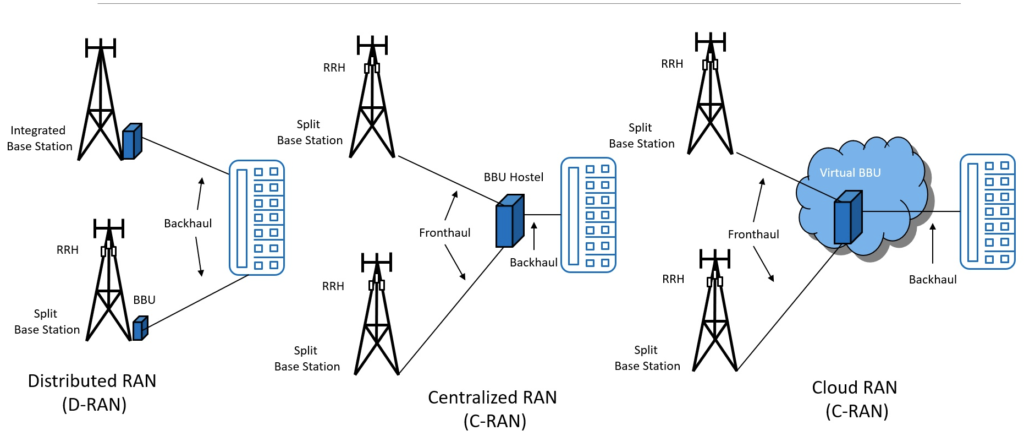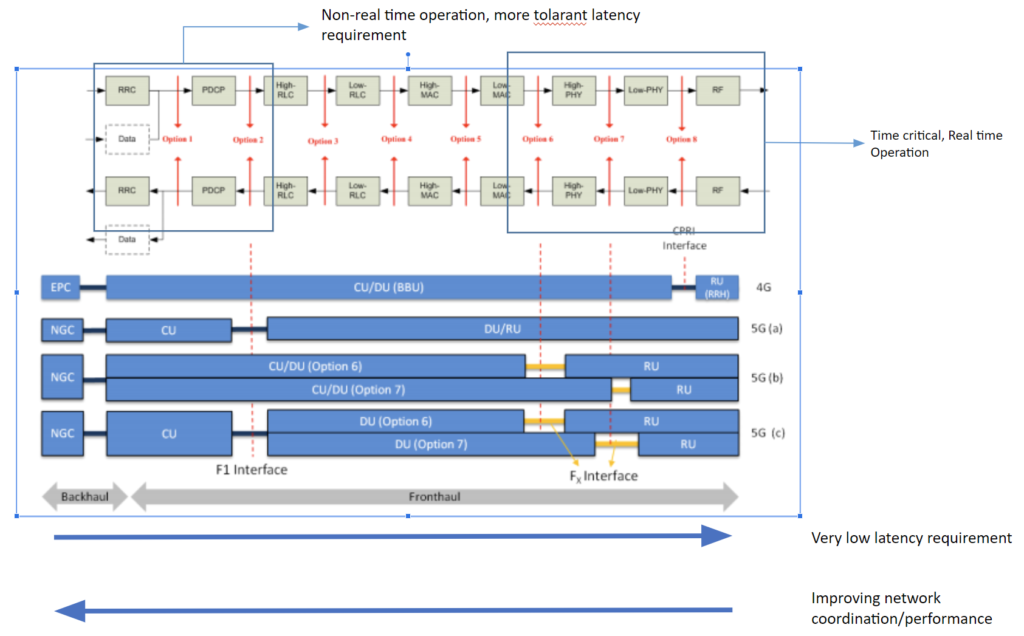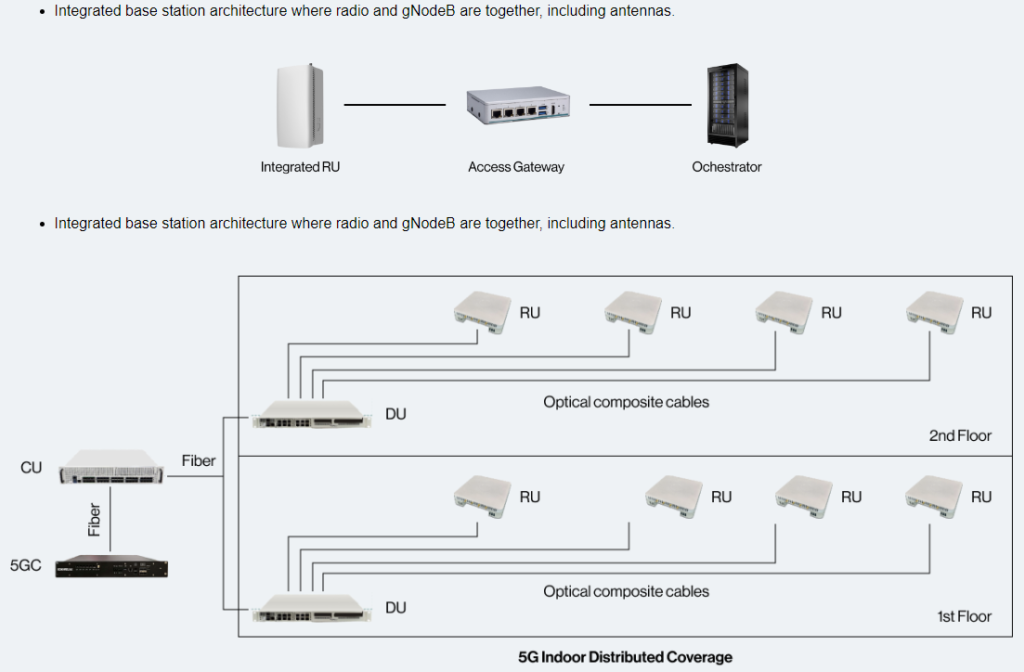Introduction
In this page I summarize 5G split options. First I explain key nodes in 5G architecture, and RAN architecture in particular.
Then, 5G Function Split Options, or different RAN implementation is discussed, along with trades off.
Small Cell Forum design is discussed in more detail with some explanation of FAPI messages, which sends data between RAN nodes.
5G Architecture
General 5G architecture includes UE, RAN and Core network as illustrated below:

5G RAN components
The RAN consists of radio equipment, such as antennas and base stations, that transmit and receive signals over the air. The RAN also includes the functions and protocols that manage the radio resources, such as frequency, power, and modulation.
- Antenna
- RRU
- BBU
- CU
- DU
5G RAN deployment options
5G RAN deployment option could be Distributed RAN, Centralized RAN, or Cloud RAN:

5G RAN functional split options
Below diagram lists protocols and latency requirements. It also lists functionalities in High Phy and Low Phy
RAN could also be deployed according to functional split options where each components such as RRU, BBU (DU/CU) could be designed to perform particular protocols stack:

The choice of function split options should be considered based on trades off between tolerant latency, and front haul bandwidth.
Notable design choices that uses the above functional split options:
- Monolithic NG Radio Access Network Architecture

- Open Radio Access Network- ORAN Architecture (7.2x split)

- 5G small Cell architecture

Notable split options between DU and CU:

O-RAN functional split between O-DU (O-RAN defined distributed unit) and O-RU (O-RAN defined radio unit)
- O-RAN support 7.x split
- Supports “multi-TRP”, Joint Reception, multiple Carrier aggregation and similar features which need low latency.
- Great multiplexing gains on fronthaul link can be achieved because of centralized or common scheduler.
- Joint processing on multiple access node is possible (Transmit/receive at same time on different nodes).
- Key constraint in this approach is high latency stringent requirement because of subframe-level timing interactions between part of PHY layer in CU and part of PHY layer in DUs
- Most of the L1/L2 functions which need high processing power can be virtualized in this split and then enable efficient resource utilization and optimization from the SMO layer in O-RAN.
- Fronthaul interface needs to meet certain QoS to ensure priority for time critical data.
- Split 7.2x is the O-RAN Alliance fronthaul specification between O-DU to O-RRU. It has two variants: 7.2a and 7.2b based on where precoding occurs

- Comparing split 7.2a and split 7.2b
| Split 7.2a | Split 7.2b |
| Precoding is in O-DU | Precoding is in O-RU |
| RRU are much simpler and lower in cost | |
| the fronthaul bandwidth requirement gets smaller since DL precoding in O-RRU prevents further increased demand in fronthaul bandwidth when the number of MIMO streams are greater than MIMO layers | |
| processing and memory requirements are increased in the O-RRU | |
| L1/L2 functions which need high processing power can be virtualized in this split and then enable efficient resource utilization and optimization from the SMO layer in O-RAN. |
Conclusion
I was an integration engineer a while back. At that time, I worked with tower crews to install hardware on base stations. I was not aware of protocols and details functionality of each hardware/nodes. Hopefully the diagrams on this page would help viewers as they help me in the past to understand the network's big picture, the scope of our work in the whole network.
References:
Exploring functional Split in 5G.
5g-fundamentals-functional-split-overview (hubersuhner.com)
Exploring functional splits in 5G RAN: Tradeoffs and use cases (Reader Forum) (rcrwireless.com)

